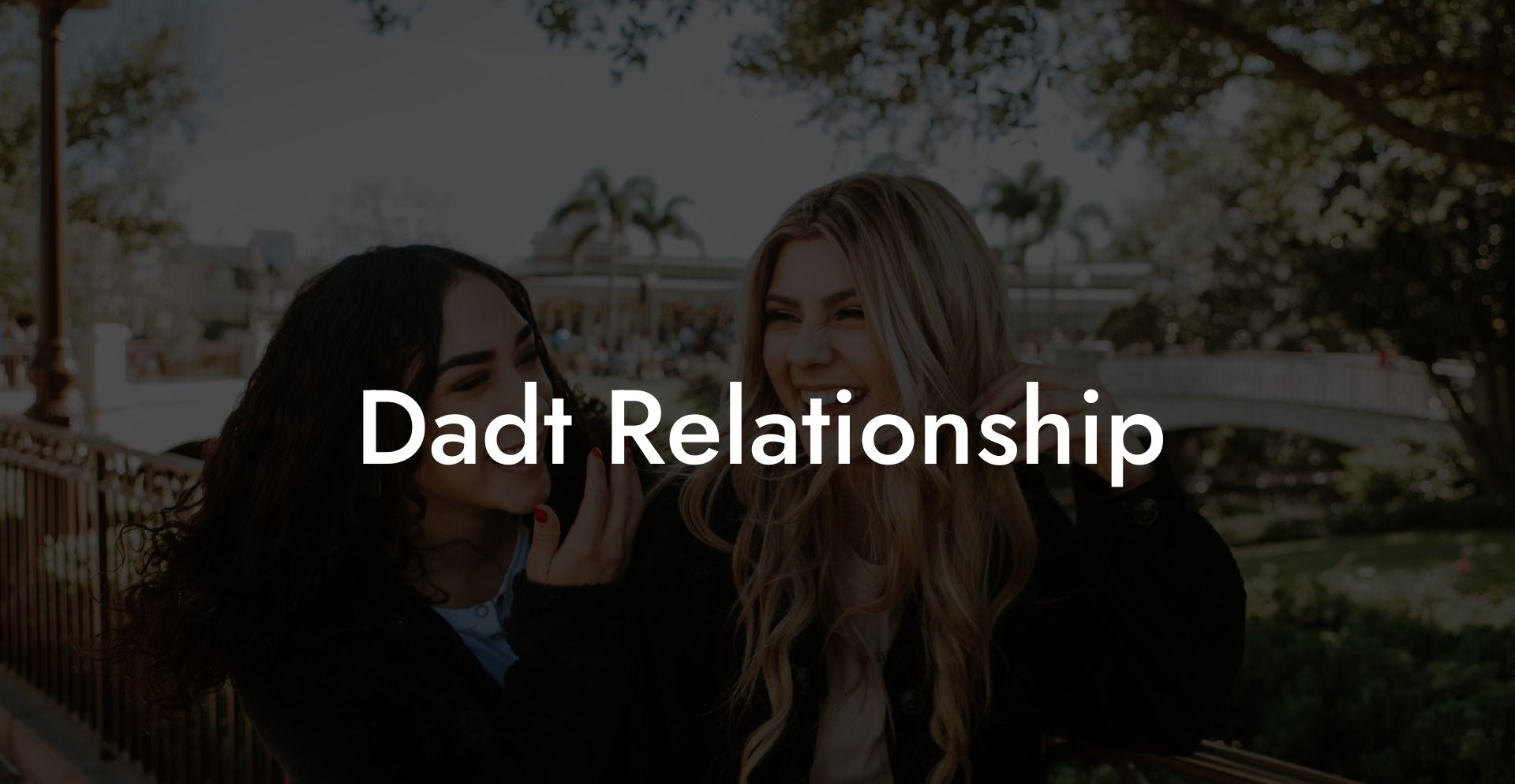Navigating the world of non-monogamous relationships can be daunting, especially when you come across an unfamiliar term like "DADT". In this article, we will provide you with the complete guide to the DADT relationship and its place in the world of non-monogamy, monogamy, and polyamory. So, let's dive in and explore what this fascinating relationship dynamic entails.
Dadt Relationship Table of Contents
What is a DADT Relationship?
DADT stands for "Don't Ask, Don't Tell." It is a relationship arrangement where partners agree to explore non-monogamous relationships outside of their primary partnership but do not discuss the details of these encounters with one another. In essence, partners have a mutual understanding that they can date or have sexual experiences with others, but they are not required (or allowed) to share the details with their partner.
This type of relationship dynamic can be seen in various forms, including but not limited to:
- Swinging
- Open relationships
- Polyamorous relationships
The Appeal of DADT
For some couples, the DADT arrangement is appealing as it offers the freedom to explore new experiences and connections without the need to disclose these interactions to their primary partner. Reasons for choosing the DADT relationship structure may include:
- Maintaining a sense of privacy and autonomy
- Reducing feelings of jealousy or insecurity
- Enhancing the excitement and novelty of each encounter
- Avoiding emotional entanglements that may come with full disclosure of secondary relationships
Potential Challenges
Despite its appeal, the DADT relationship structure also comes with its unique set of challenges. Some of these challenges may include:
- Difficulty setting and maintaining boundaries, as partners are not fully aware of each other's experiences
- Increased risk of miscommunication and misunderstandings
- Potential for one partner to feel left out or unsupported
- Struggling with trust and safety, given the discreet nature of the relationships
Navigating a DADT Relationship
Navigating a successful DADT relationship is possible. Here are some tips to consider if you and your partner are exploring this dynamic:
- Establish explicit boundaries and guidelines for what is and is not acceptable within your DADT relationship system.
- Set up regular check-ins to ensure that both partners feel emotionally supported and to address any concerns that might arise.
- Practice open and honest communication about your feelings and thoughts on the relationship arrangement, without delving into the details of other connections.
- Address any issues as they arise and be prepared to adjust your DADT structure if needed.
Dadt Relationship Example:
Jane and Mark have been in a committed relationship for five years. They both have strong desires to explore their sexuality and connections with others but worry about jealousy and instability in their primary partnership. After much discussion, they decide to move forward with a DADT arrangement. They set guidelines and boundaries, such as limiting their external connections to casual sexual encounters and avoiding emotional attachments. As they both continue to navigate their DADT relationship, they have regular check-ins to ensure they feel secure in their primary partnership and adjust their boundaries as needed.
Understanding and navigating a DADT relationship can be challenging, but with open communication, emotional support, and clear boundaries, it can be a successful and satisfying dynamic for some couples. If you've enjoyed this guide and found it helpful, feel free to share it with others who may be interested in learning more about non-monogamous relationship structures. Be sure to explore other guides at The Monogamy Experiment to deepen your knowledge of monogamy, non-monogamy, and polyamory.













